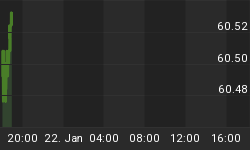"Bad is never good until worse happens." ~ Danish proverb

Source: Bank of Japan
The Japanese markets have still not recovered after the real estate bubble which lasted from 1986-1990 despite having dropped interest rates to zero and throwing volumes of money at the problem. Look at the above chart, total Debt in 1990 was roughly 150 of GDP: today total debt is close to 290% and the market is still in a funk. Could this be what lies in store for the U.S?

In 1990 the Nikkei was at 40,000, today almost 20 years later it is having a hard time trying to make it to the half way point despite all the money the government has infused into the economy. Worse yet the main down trend line is still intact and after all that money the Japanese government threw at the economy the Nikkei is trading close its lows; currently, it's at 9,695, roughly 75% below its all time high. Let's remember that Japan is a big exporter and manufacturer of goods. The US, on the other hand, has lost most of its manufacturing capacity and imports far more than it exports. It's starting of on an incredibly bad note in comparison to the Japanese.
We have listed charts from two sources; the differences are minuscule at most.

Source: Steve Keens Debt watch

Source: Ned Davis research
Surprise, surprise, the picture is simply terrible. Total debt now accounts for roughly 380% of GDP, and we have only just begun spending. The Japanese started from 150, and it took them to 20 years to push it to 250%. We are, on the other hand, are starting at almost 380%, and we have just begun our so called stimulus programs. The government is projecting a deficit of 9 trillion dollars in the next 10 years; they moved this estimate up from 7 trillion to 9 trillion in less than one year. If they increased their estimates by almost 28% in one year, do you think this estimate is going to remain unchanged for 10 years? They also raised the deficit for 2010 by 19% to 1.5 trillion.
Now here is the massive difference between the Japanese and the U.S. The Japanese consumer has saved a huge amount of money and continues to do so, they can thus (and to some degree they have indirectly financed this debt by purchasing government paper. The U.S. consumer, on the other hand is broke and strung by his heels with debt; we had two years where the savings rate was actually negative (2005 & 2006) talk about arrogance and foolhardiness. So we are entering into this mess with a Debt to GDP ratio that is 2.6 times larger than the Japanese and with the consumer completely broke. To make matters worse we are fighting two wars and trying to solve a multitude of problems when the nation is for all intents and purposes almost bankrupt. Let's not forget the rising unemployment rate which officially is close to hitting 10% but unofficially (the number of individuals that have given up looking for work plus those that are still looking for work) is probably well over 15%.
Going forward the situation is only going to get worse as the government is going to have to continually create money out of thin air to fund many of its social programs, fund the two large scale wars that are costing this nation several billion dollars a month and pour billions and billions into Medicaid and eventually into social security. The only hedge therefore would be to get into commodity based assets. Investors should use all strong pull backs to either add to or open up new positions. For example, right now the natural gas sector is relatively cheap and undervalued, some plays in the agricultural sector are also rather cheap and so some positions could be opened up in these sectors right now. We would wait for pull backs in the other commodities based sectors before opening up new positions as many of them have experienced very strong upward moves in the past few months.
"It is a painful thing to look at your own trouble and know that you yourself and no one else has made it." ~ Sophocles, BC 496-406, Greek dramatist
















